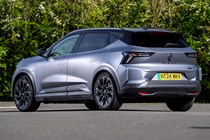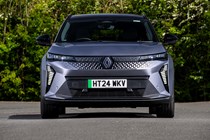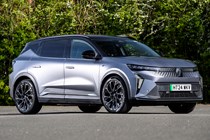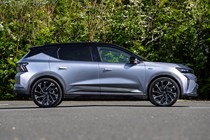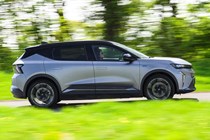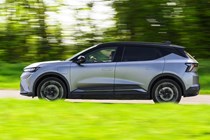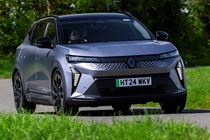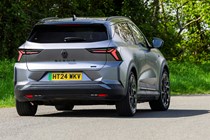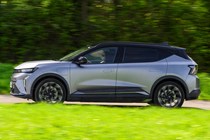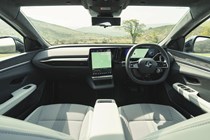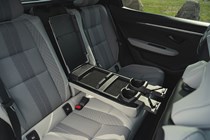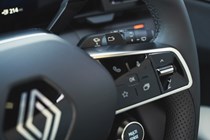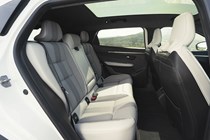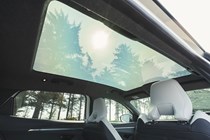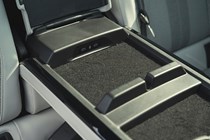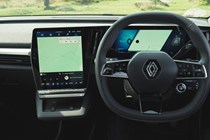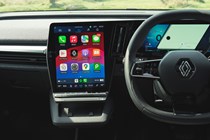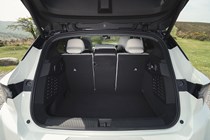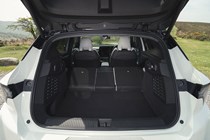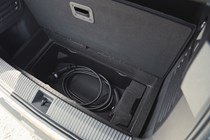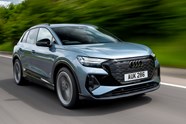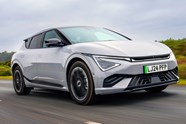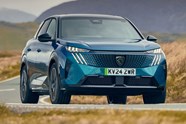
Renault Scenic E-Tech Review: brilliantly innovative
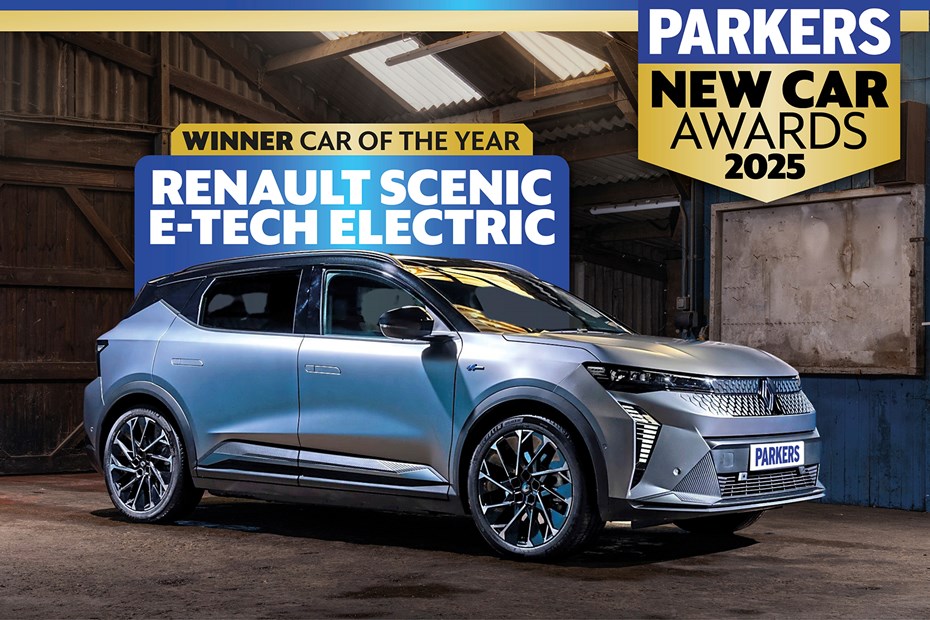
At a glance
| Price new | £37,195 - £42,195 |
|---|---|
| Used prices | £24,490 - £34,760 |
| Road tax cost | £195 - £620 |
| Insurance group | 28 - 34 |
Get an insurance quote with

|
|
| Fuel economy | 3.5 - 3.7 miles/kWh |
| Range | 260 - 381 miles |
| Miles per pound | 5.6 - 10.9 |
| Number of doors | 5 |
| View full specs for a specific version | |
Available fuel types
Fully electric
Pros & cons
- Easy and enjoyable to drive
- Good real-world driving range
- Spacious, well-planned interior
- Fidgety ride at times
- Poor rear visibility
- Not particularly efficient
Renault Scenic E-Tech SUV rivals
Overview
Should you buy one?
Yes. To sum up the Renault Scenic E-Tech: it’s not just good enough to be considered as a great family electric car, it’s a great family car full stop. We like the car’s efficiency and the battery range of the 87kWh battery, which is very welcome for a family car at this price point. We also appreciate the effort Renault has gone to in delivering a car that is largely recyclable – including the battery itself.
Most importantly the Scenic works really well as a family car, with a spacious interior for people and luggage, and lots of thoughtful touches to bolster its usability. Oh, and not forgetting safety: there is plenty of tech looking after the well-being of those onboard, but without those systems becoming infuriating.
Lastly, almost everyone will appreciate how easy it is to drive, but it manages to throw in a generous measure of dynamic sparkle on top for those who are searching for an electric car that can deliver plenty of fun when the family’s still at home. To the top of the class it goes!
What’s new?
For decades, the Renault Scenic name has been synonymous with practical family-friendly transportation. The original model arguably created the small MPV – code for a car offering big space in a small footprint – in the 1990s, and this continues with the latest version. It’s been revolutionised by making the leap to fully electric, and so impressive is its transformation we’ve awarded it our Car of The Year for 2025.
That’s quite a change, but a clear pointer that Renault is super-serious about electrification. This family-sized electric SUV (even though Renault doesn’t officially call it that) joins the Megane, R5 hatchback and R4 SUV in being a cutting-edge EV that’s inspired by a popular car from the company’s back catalogue. Renault hopes that buyers won’t see it as anything other than a great car that just happens to be powered by electricity.
The problem is that it means it’s up against many rivals. Everything from regular petrol and hybrid models, such as the bestselling Nissan Qashqai, to other all-electric cars, such as the BYD Atto 3, Volkswagen ID.4, Skoda Enyaq, Kia EV6 and Peugeot E-3008. You can put the Tesla Model Y is in the mix, too, which is in the same price bracket as the pricier versions of the Scenic.
It’s certainly a roomy choice. Compared with the Renault Megane E-Tech, the Scenic has tons of space, which is down to an additional 100mm between the front and rear wheels that’s all been added to the rear legroom. It also undoes the Megane’s ho-hum driving range with the option of a Long Range 87kWh model. How far does it go? How does 379 miles WLTP (call it 270-290 in real-world driving) sound?
The firm has also made sure the Scenic is an ethical choice. Some 24% of the materials in the Scenic are recycled, with the aluminium bonnet and doors 40% recycled and four-fifths of the dashboard structure having a second life. And 90% of the car will be recyclable at the end of the vehicle’s life, too, including the battery.
There are plenty of versions to choose from. The entry-level Techno trim includes 19-inch alloy wheels, wireless Apple CarPlay and Android Auto, wireless phone charging, a powered tailgate, adaptive cruise and LED headlights. Techno Esprit Alpine adds 20-inch diamond cut alloys, electrically adjustable heated front seats and plusher dashboard materials, while top-rung Iconic Esprit Alpine gets a Harman Kardon sound system, hands-free parking, a smart rear-view mirror and a 360-degree parking camera.
On top of that lot is something a bit flash to impress your mates with – or at the very least keep the kids entertained. It’s called the panoramic Solarbay roof. Instead of a physical blind to stop glare, the large glass roof has polymer-dispersed liquid crystals that make individual sections of the glass opaque at the touch of a button.
So is the Scenic E-Tech different enough from the opposition to fully appeal in a market that’s exploding with choices? Read the following sections for a deep dive into this interesting family car. We rate it after driving several versions over an extended period on UK roads including a six-month long-term test – you can find out how we test cars to see how we’ve come to our conclusions.



